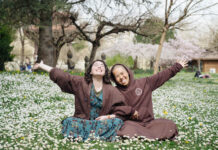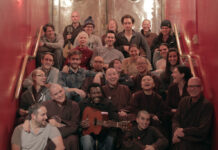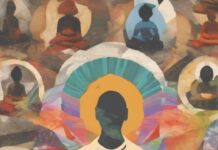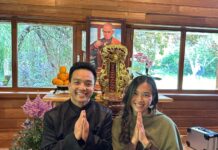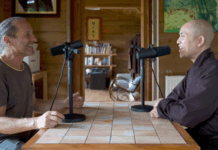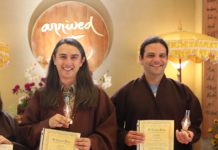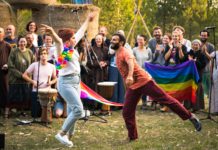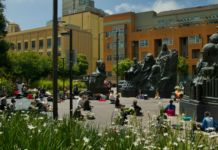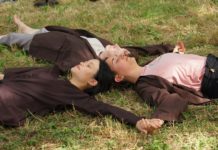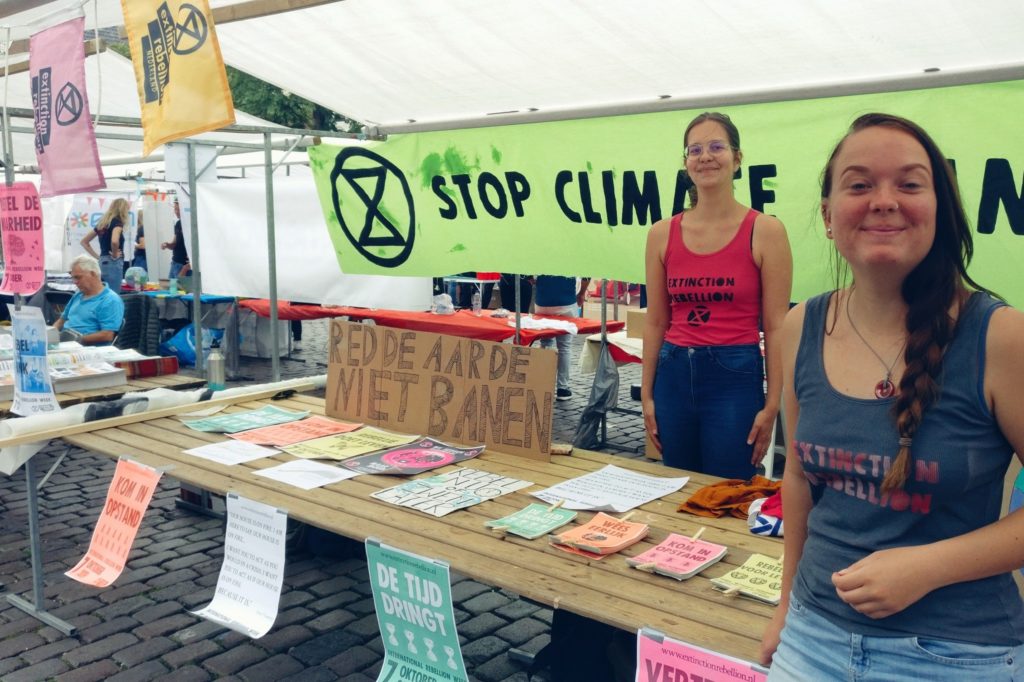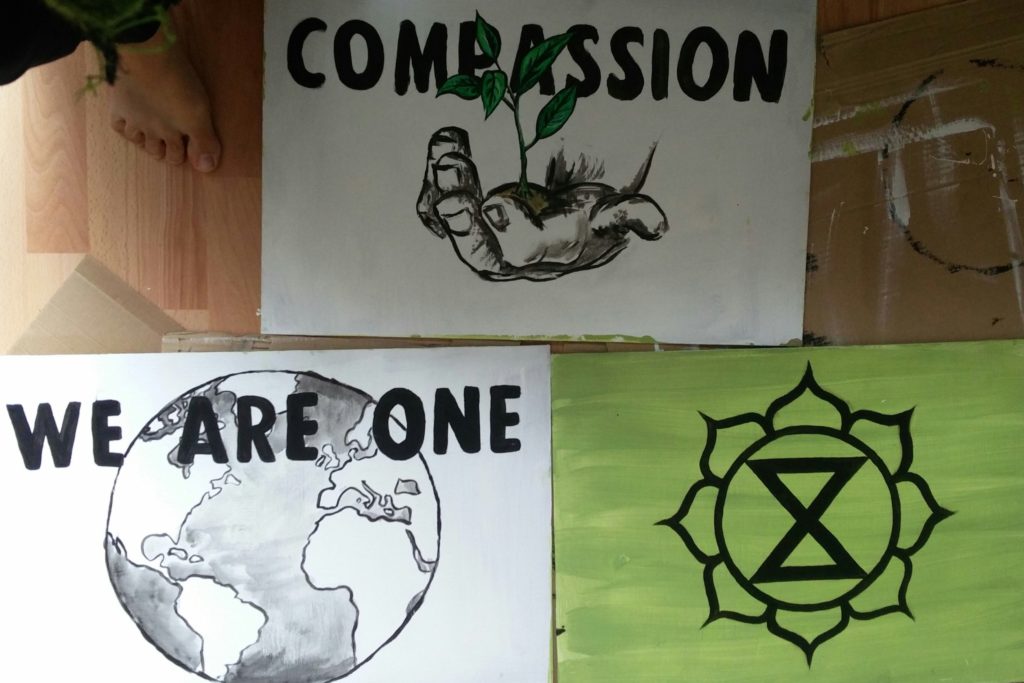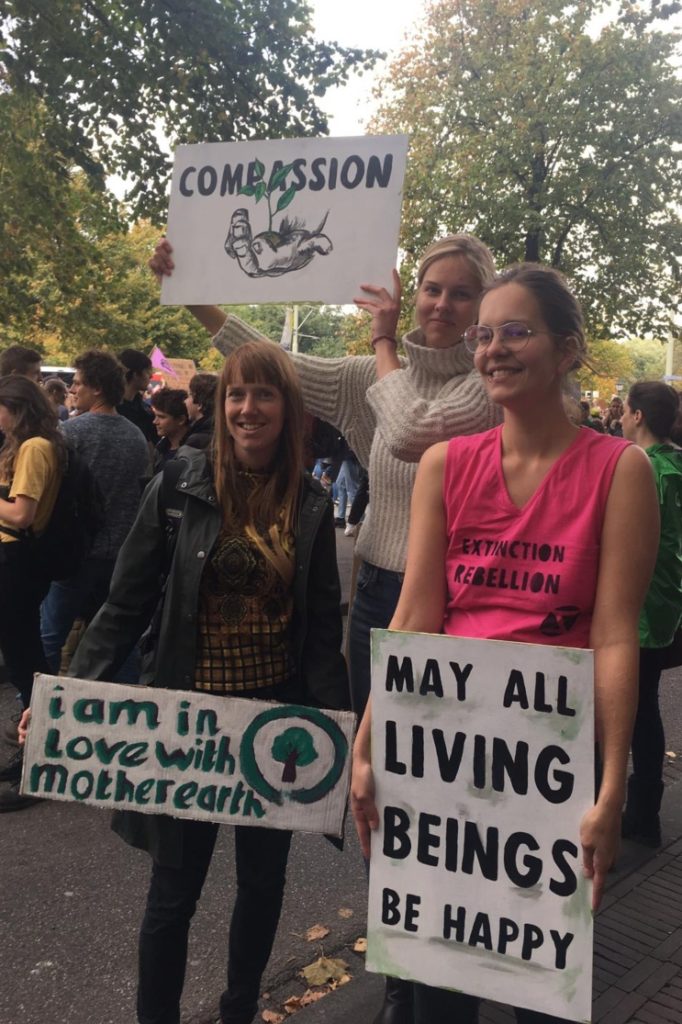By Lian Beijers
Click here to read the Dutch translation
When I started practicing meditation, I felt drawn to the practice of metta or loving kindness. After practicing extending wishes for the well-being of others during sitting meditation, I asked myself what I could do to help reduce suffering in the world. I tried to help those in my direct vicinity, but eventually I questioned if this was really the best I could do. I realized that climate change is a major cause of suffering, and if I wanted to help reduce or prevent suffering all over the world, my energy might be best spent trying to help other people see this truth.
At the time, I started reading more of Thay’s teachings, and the idea that perhaps my exploration of Buddhism could be engaged Buddhism took root in me. That was when I attended my first Extinction Rebellion meeting. Extinction Rebellion (XR) is an international movement that uses nonviolent civil disobedience in an attempt to halt mass extinction and minimize the risk of social collapse.
As a cisgender white woman from the Netherlands, I am aware of my privilege. I can practice nonviolent civil disobedience without having to fear for my safety or the safety of my friends. This is not the case in many countries and for people of differing backgrounds. I aspire to make use of this privilege to the best of my ability, without claiming that it is the only way for people to take care of the Earth.
Nonviolent Direct Action
During my first XR meeting, I felt a great sense of homecoming. Most members of Extinction Rebellion are committed to building an inclusive community. For me personally, it was a big relief that during XR meetings, many hand-signals were used to indicate things that are normally either verbalized (e.g. wanting to speak next) or expressed with sound (e.g. clapping to indicate agreement). I have strong sensory sensitivities, so the stimuli in regular meetings can be exhausting for me.
What inspired me even more was that this level of care and attention could also be found in the way Extinction Rebellion W designed its actions. In some ways, an XR action (or meeting) is a lot like a Wake Up Sangha evening. We start with a check-in to see how everyone is doing. At the end, there is space for a sharing circle to finish whatever we have been doing together in mindfulness. Because of these similarities, it has felt natural to make compassionate resistance a part of my practice. I also joined the actions of some other groups, but without the structure of opening and closing together in mindfulness, I often went home feeling drained and sad instead of inspired. To me, this emphasizes how important it is to bring compassion and mindfulness into activism.
The actions of Extinction Rebellion consist of many creative and colourful expressions of our shared feelings of concern for the environment. We do the usual marching and chanting, but Extinction Rebellion is most well-known for its nonviolent civil disobedience. Civil disobedience, also called passive resistance, is a symbolic or ritualistic violation of the law—for example, blocking a street and/or refusing police orders to leave a certain location—rather than a rejection of the system as a whole. Extinction Rebellion takes inspiration from the Civil Rights movements and other radically nonviolent groups. We aim to disrupt the paradigm of “business as usual,” because we can no longer continue as we are and believe we will find ways to maintain life as we know it. We aim to help people see the truth of the situation we are finding ourselves in: We are living in the sixth wave of mass extinction.1
Civil disobedience is a way for me to express my love and concern for our planet. It is an opportunity to say that I care deeply. I think this is true for many people in the movement. People in both Wake Up and Extinction Rebellion love to sing. I even made a sheet combining action songs and Wake Up songs, which I have used with both groups to strengthen the ties between them. Our songs are an expression of our love for the planet and each other.
Some people think we are not radical enough, because we sometimes chant to the police that we love them too. This is actually an important part of the movement to me, because I know through the practice that the police and politicians are not fundamentally separate from me. I might not agree with their actions, but they, too, are caught in the system they grew up in. They do what they do because of the causes and conditions present in their lives. With similar conditions, I might have ended up in their shoes. If they are not fundamentally different from me, what is there to hate or be angry with?
Taking Care of My Community
Extinction Rebellion is trying to find a way to take care of the Earth, and the welfare of our community is one of the spearheads in that process. When I started out, I thought the best way for me to contribute was to help the research circle write essays or flyers about the climate crisis and our demands. I do science for a living, so this only made sense. However, as time passed, I realized that I had more to contribute than just my intellectual capacities. I felt drawn to another circle, called the regenerative culture (RC) circle.
Regenerative culture is the shared view that it is important to care not only for the Earth, but also for ourselves and for our community. This contributes to the health and resilience of the group and therefore also to the sustainability of our activism. The RC circle proved to be the perfect place for me to contribute something from my heart, because I could share many elements of my practice with others. For example, the RC circle organizes workshops on topics like nonviolent communication and deep listening, and my experience with Dharma sharing helps me to create a safe environment for people to share their struggles and their joys.
Taking Care of Myself
I dived into Extinction Rebellion headfirst, and like so many other activists, I wanted to do too much at once. I have since found great support in the talks of Sister True Virtue and Sister True Dedication, which often describe how we must take care of ourselves first. I believe that a true regenerative culture is based on the insight of interbeing that we are all part of the Earth. That means that in order to take care of the Earth, we must take care of ourselves. And to take care of ourselves, we must take care of the Earth.
This insight has strengthened my resolve to act based on what I believe is right (e.g., virtue-based ethics) rather than for the ultimate result I hope to achieve (e.g., utilitarian ethics). In other words, I am doing all of this because I think there is no other way for my heart to be happy. I try not to be attached to the outcomes, because clinging too strongly to success will cause me to suffer more and burn out. Instead of focusing on the results, I aspire to find joy in the practice and in my community, whether I have a lot or a little to contribute. Going forward, I hope to continue to practice taking care of myself so I can find ways to take care of our dear Mother Earth.
1Dr. Emily Grossman, “Emergency on Planet Earth,” Extinction Rebellion http:// extinctionrebellion.uk/the-truth/the-emergency/
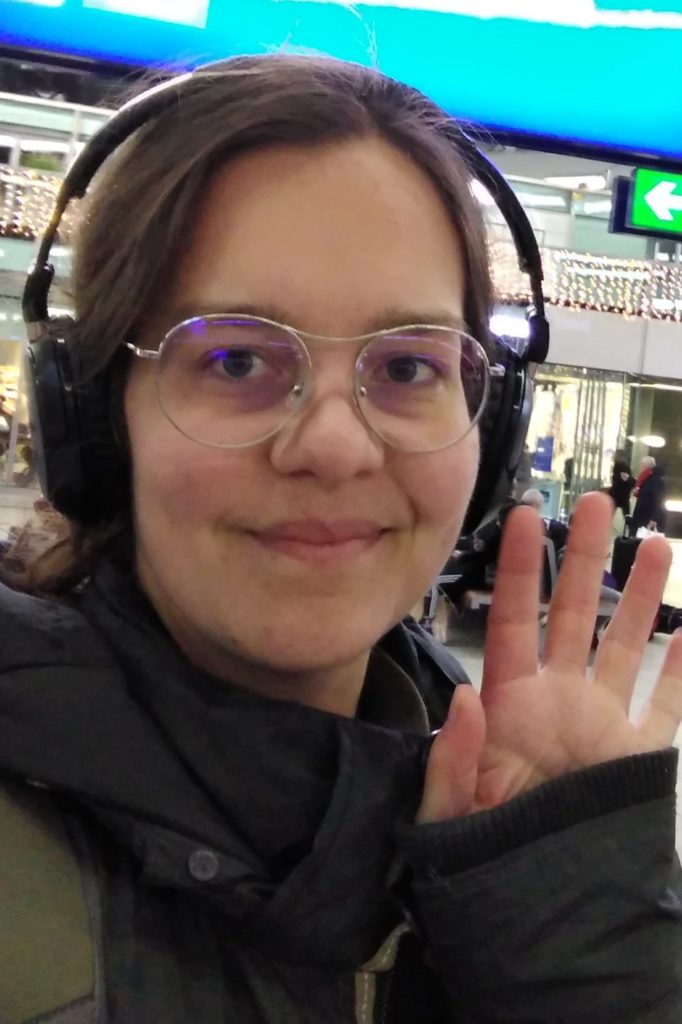
Lian Beijers, Courageous Connection of the Heart, has been practicing in the Plum Village tradition since June 2019. She regularly facilitates at her local Wake Up Groningen Sangha in the Netherlands.
Reprinted with permission from the Mindfulness Bell. To read more articles in the current Winter/Spring issue, you can purchase a single issue or a subscription here.

